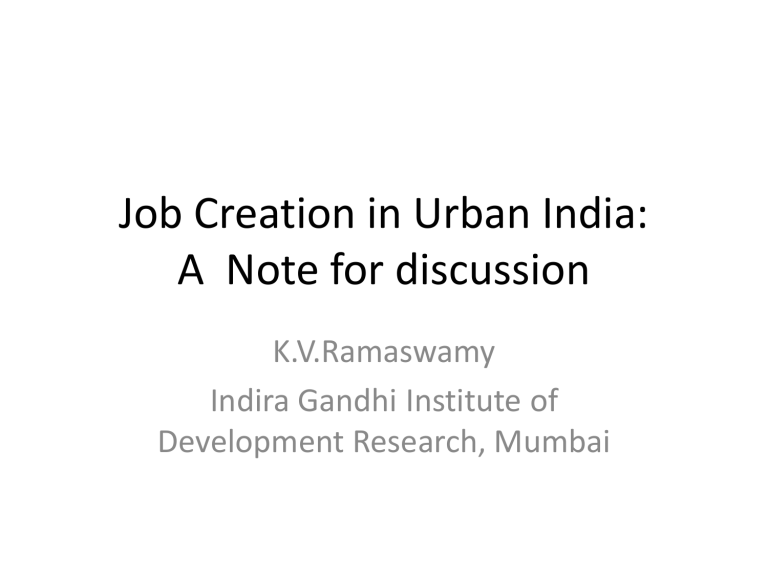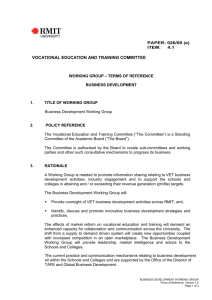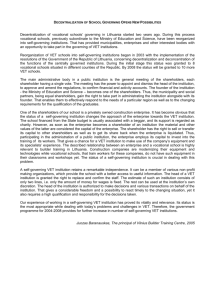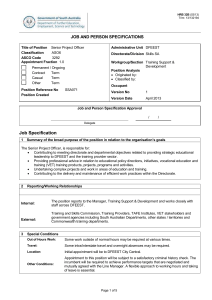Job Creation in Urban India

Job Creation in Urban India:
A Note for discussion
K.V.Ramaswamy
Indira Gandhi Institute of
Development Research, Mumbai
Importance of Urban India
• Urban population grew by 2.76 percent per annum in the decade 2001-2011.
• Its share in total population increased to 31.1
percent in 2011 from 27.8 percent in 2001
• Little less than 50 percent of the jobs created in
India is accounted for by urban India over the period 1999-2009.
• More than 85 percent of the jobs created in business services and more than 80 percent in manufacturing were in the urban sector
26/03/2013 Berkeley-Bengaluru 2
Who is creating jobs in Urban India?
• Construction is the fastest growing sector with a share of 10 percent of total urban employment
• Transport, Communications and Other business services together take the second place
• Manufacturing occupies the third place in terms of jobs growth. Its share in total urban employment is 23 percent
• Other business services include real estate, financial services, IT and IT enabled services and social and community services
26/03/2013 Berkeley-Bengaluru 3
What type of urban jobs?
• Nearly 80 percent of all urban workers are in informal employment broadly defined to include both self employment and wage employment (casual wage + regular wage)
• Manufacturing, non-trade services and construction dominate urban informal employment
26/03/2013 Berkeley-Bengaluru 4
Education-skill composition?
• Services sector has greater proportion (61%) of workers with secondary education and above
• Manufacturing 54 % of the workers were having below secondary education
• Construction is dominated by casual workers with below primary education. It is expected to create highest incremental casual employment up to 2022
26/03/2013 Berkeley-Bengaluru 5
Development of skilled workforce
• Construction industry requires a large number of carpenters, masons, plumbers and construction machine operators
• Manufacturing requires a wide variety of industry specific skills and technicians in garments, textiles and auto-component industries etc
• Services face of shortage of skilled professionals
26/03/2013 Berkeley-Bengaluru 6
Current State of Vocational Education
(VET)
• In the age-group 15-29 the proportion of population having formal vocational education has declined to 2% in 2009 from 2.4% in 2004
• Proportion with non-formal VET has declined to 4.8% in 2009 from 7.7% in 2009
• It has declined in absolute terms as well
26/03/2013 Berkeley-Bengaluru 7
Unemployment among VET
• Unemployment rate among persons with formal vocational training is 24%
• Whether the vocational training was ever helpful in getting a job? (NNS 66 th round)
• 29% of the individuals said they have not benefitted from training
• Is there a mismatch?
• VET for informal sector?
26/03/2013 Berkeley-Bengaluru 8
Employment Growth Rates by Sector in Urban India: 1993-94 to 2009-10
Sector
Agriculture
Mining & Quarrying
1999-00 over
1993-94
-3.4
2009-10 over
1999-00
1.1
2009-10 over
1993-94
-0.6
-3.7
0.2
-1.3
Manufacturing
Electricity, water, etc.
1.6
-4.2
2.8
2.1
2.4
-0.3
Construction
Trade (Retail+ Wholesale),
Hotel and Restaurant
6.3
5.3
5.7
8.0
1.6
4.0
Transport, Storage and Communications
3.9
2.7
3.2
Other Services like Financial, Business,
Public Administration, Education etc
-0.7
3.4
1.8
Above Three Services 3.4
2.5
2.9
All Sectors 2.3
2.7
2.6
Source: NSS Employment and Unemployment Surveys adjusted for population censuses. Employment is measured by number of workers by UPS Status.
26/03/2013 Berkeley-Bengaluru 9
Industry
Agriculture
Mining
Structure of Urban Employment by Industry
1999-2000
8.7
0.8
2009-2010
7.5
0.6
Electricity
Construction
Manufacturing
Trade, Hotels and Restaurant
Transport, Storage, Communication
Other Services like Financial, business etc
Above Three Services
All Workers
26/03/2013 Berkeley-Bengaluru
0.7
7.9
22.7
26.9
8.7
23.5
59.2
100.0
0.6
10.2
23.0
24.2
8.7
25.2
58.1
100.0
10
Incentive for firms to hire apprentices/trainees?
• The Apprentice Act, enacted in 1961, regulates the program of training apprentices in the industry
• Labor Ministry initially suggested that companies should absorb 50% of the trainees that they hire later backtracked to suggest preference should be given to them
26/03/2013 Berkeley-Bengaluru 11
Flawed VET system?
• VET for informal sector workers?
• Entry barriers?
• Minimum secondary school education (class
VIII and Class X) is a prerequisite for enrolling in craft and apprenticeship schemes for construction-related training..
• Duration….
• Issue of private participation..
26/03/2013 Berkeley-Bengaluru 12
References
• Ramaswamy and Agrawal (2012):Chapter-8,
India Development Report, M.Dev(Ed)
• Ruchi Hajela (2012): “Shortage of skilled workers: a Paradox of the Indian Economy”,
SKOPE research paper No.111
• Tushar Agrawal (forthcoming):Skill development in India: an examination”,
Journal of education and work
26/03/2013 Berkely-Bengaluru 13
Thank you
26/03/2013 Berkely-Bengaluru 14











